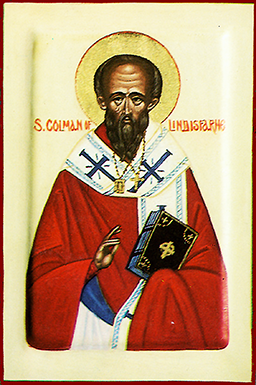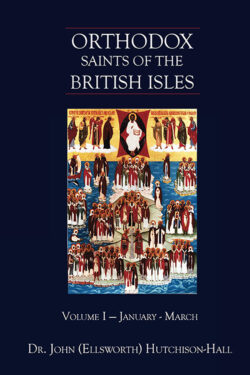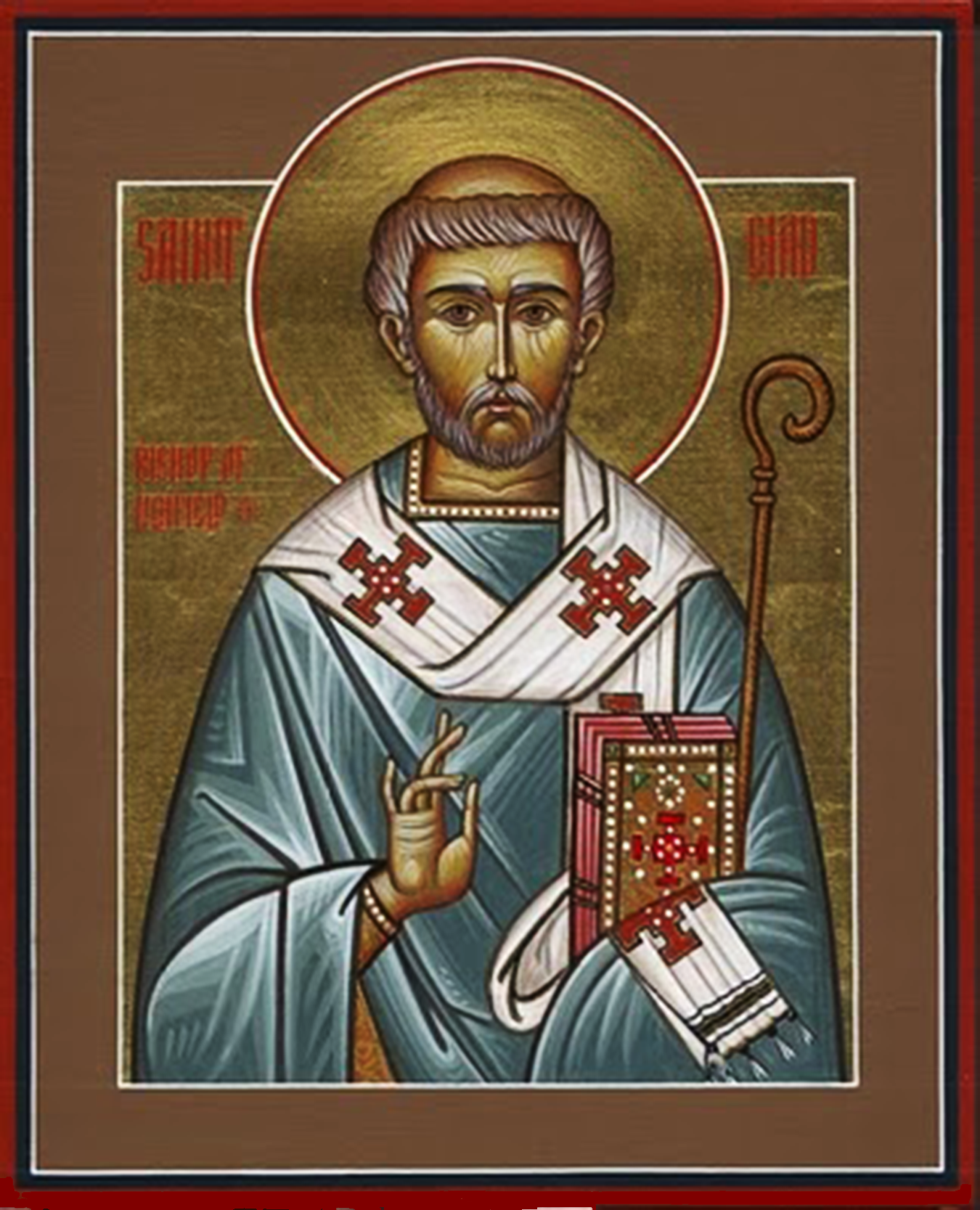
Orthodox Saints of the Pre-Schism
See of Rome
2nd March (NS) — 18th February (OS) 2024
ANGILBERT, a friend and confidante of the Emperor Charlemagne (r. 768–814), and student of the eminent Anglo-Saxon scholar/educator Alcuin of York (†804). St. Angilbert’s Latin poetry earned him the nickname “Homer”. He married Charlemagne’s daughter Bertha, but with her blessing he received monastic tonsure, with Bertha following in his footsteps. As a reward for his service, Charlemagne gave St. Angilbert the Abbey of St. Riquier, where he served as abbot, until his repose in 814.
COLMAN of LINDISFARNE, our father among the saints Colman of Lindisfarne was a monk of the seventh century Church of Scotland and Ireland. He led the Celtic party at the Synod of Whitby. His defence of the Celtic rite led to his identification as the Last of the Columban Abbots of Lindisfarne.
Born in Connaught, Ireland little is known of his early life. St. Colman was tonsured a monk at Iona, was a disciple of St. Columba (9th June) and a contemporary of SS. Finian (16th March) and Aidan (31st August). Following the repose of St. Finian, Colman was chosen to succeed him as the third Abbot/Bishop of Lindisfarne. Noted for his austere and zealous life, and held in high repute for his sanctity, his episcopate was an exemplar of frugality and simplicity of living, as well as the devotion of his clergy to their responsibilities of preaching and ministering to the faithful. St. Colman’s defence of Celtic tradition and reluctance to yield to the Roman rite fixing the date of Easter (vide Paschal Controversy) led to the Synod of Whitby. Though he put forth an eloquent defence, King Oswy made a royal decision to follow the Roman practices. This was a decision that was met with general acceptance, but one, which St. Colman could not accept, resigning from his See. St. Colman left for Iona with all the Irish and thirty English monks from Lindisfarne. He remained in Scotland for about three years, establishing several churches, and then returned to his native Ireland with about thirty Irish and English monks. They settled on the island of Inishbofin in Co. Galway where St. Colman established a monastery and school. In time, friction developed between the Irish and English monks; St. Colman resolved this by taking the English monks to the Irish mainland, where he established a monastery which he called Mayo of the Saxons, which went on to become an important centre of sanctity and learning, and in time an Episcopal See. St. Colman returned to Inishbofin, where he reposed 675.
ETHELINA (EUDELME), (Date Unknown), St. Ethelina is the patron saint of Little Sodbury in present-day Gloucestershire. No further information, including the dates she flourished, is extant.
HELLADIUS of TOLEDO, though he served as a minister in the court of the Visigothic Kings, St. Helladius true calling was monasticism. He often visited the near-by Abbey of Agali, and in time resigned his position at court, and received monastic tonsure at Agali. In 605 St. Helladius was made Abbot of Agali, and in 615 he was consecrated twenty-sixth Archbishop of Toledo. St. Helladius served the Archdiocese of Toledo until his repose 632.
LUCIUS, SILVANUS, RUTULUS, CLASSICUS, SECUNDINUS, FRUCTULUS, and MAXIMUS, (Date Unknown), a group of martyrs in North Africa of whom nothing besides their names is known.
MAXIMUS, CLAUDIUS, PRAEPEDIGNA, ALEXANDER, and CUTIAS, a group of martyrs in 295 in Rome during the Diocletianic Persecution of whom nothing further than their names is known.
Get your copy of Orthodox Saints of the British Isles today.
Available at Amazon or your favourite e-bookstore.
CEADDA (CHAD) of LICHFIELD, A brother of St. Cedd of London (26th October), pupil of St. Aidan at Lindisfarne, who later studied in Ireland. On St. Ceadda’s return to England he was made Abbot of Lastingham, where he became known for his ability as a pastor and holiness of life. During St. Wilfrid’s (12th October) absence in France, St. Ceadda was irregularly consecrated Bishop of the Northumbrians, with his See at York in St. Wilfrid’s place. However, upon St. Wilfrid’s return, Archbishop St. Theodore of Canterbury (19th September) denied the legitimacy of St. Ceadda’s consecration, and, with great humility, St. Ceadda accepted this decision and retired to Lastingham. Impressed by his action, St. Theodore regularized his consecration and made him Bishop of Lichfield. St. Ceadda was a tireless evangelist and journeyed as far as north Lincolnshire in spreading the Gospel, and is said to have founded the monastery at Barrow. St. Ceadda reposed in 673 during the great pestilence, leaving behind a reputation for zeal and devotion. He was buried at the Cathedral in Birmingham, where his relics are preserved to this day.
CYNIBIL (CYNEBILL, CYNIBILD), a brother of SS. Ceadda (Chad) of Lichfield (vide supra), and Cedd of London (26th October), and of the Priest Caelin, all of whom worked to enlighten England. Amongst their works was the founding of the monastery at Lastingham. St. Bede the Venerable (25th May) comments on how unusual it was for four brothers to all enter the priesthood, two of them becoming bishops. The exact year of St. Cynibil’s repose in the seventh century is unknown.
FERGNA, called ‘the White’, he was a relative, disciple, and successor of St. Columba (9th June) as Abbot of Iona. St. Fergna reposed, as Abbot of Iona, 637.
GISTILIAN (GISTLIAN), St. Gistilian was the uncle of St. David of Wales (1st March), as well as a monk at St. David’s — Menevia. There is no further information on this saint extant.
JOAVAN, a native of Britain, St. Joavan went to live with his uncle St. Paul of Léon (12th March) in Brittany. St. Paul later consecrated St. Joavan bishop. St. Joavan reposed circa 570. There are several churches in Brittany dedicated to him.
JOVINUS and BASILEUS, two Christian men who were martyred circa 258, in the persecutions during the reign of Emperor Valerian (r. 253–260). They were buried alongside the Latin Way in Rome.
MARTYRS of CAMPANIA, a group of over four hundred martyrs in Campania under the Lombards, circa 579. The story of their martyrdom was memorialised by St. Gregory the Dialogist (3rd September). Some sources, including English Roman Catholic priest and renowned hagiographer Fr. Alban Butler (†1773), list them as the "Martyrs under the Lombards".
MARTYRS of PORTO ROMANO, a group of martyrs, during the Diocletianic Persecution (303–313). Nothing is known today, but the names of these four:
Heraclius, Januaria, Paul, and Secondilla.
SLEBHENE (SLEBHINE), an Irishman who was a monk at Iona, St. Slebhene served as its fifteenth abbot from 752 until his repose 767.
WILLEIC, an Englishman who was a disciple of St. Swithbert (1st March). St. Willeic also served as Prior and later Abbot of Kaiserswerth near Düsseldorf. St. Willeic reposed in 726.
Prior to the Schism the Patriarchate of Rome was Orthodox, and fully in communion with the Orthodox Church. As Saint John of Shanghai and San Francisco +1966 said “The West was Orthodox for a thousand years, and her venerable Liturgy is far older than any of her heresies”.
Details of British Saints excerpted from Orthodox Saints of the British Isles.
Details of continental saints from these sources.
In many cases there are several spelling versions of the names of saints from the British Isles. I use the Oxford Dictionary of National Biography version as the primary version with the more prevalent version in parenthesis e.g. Ceadda (Chad) of Lichfield.



